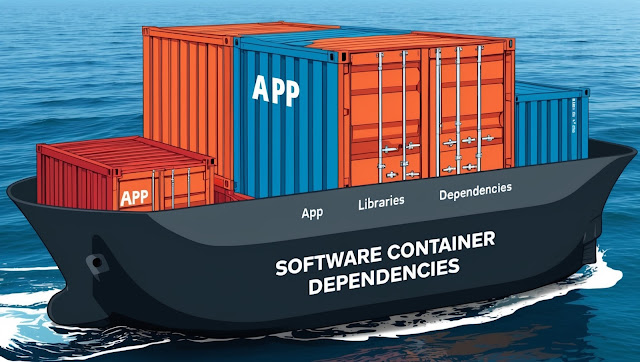If you’ve ever heard about Docker or containers and wondered what all the fuss is about, this guide is for you. Whether you're just star...
If you’ve ever heard about Docker or containers and wondered what all the fuss is about, this guide is for you. Whether you're just starting out or have some experience in development, understanding Docker and container concepts can significantly improve how you build, package, and deploy your applications.
Let’s break down these concepts in a simple, easy-to-understand way.
What Are Containers?
Imagine you’re working on a project, and it runs perfectly on your computer. But when you try to run it on another computer (like a colleague's laptop or a production server), it fails. This is a common problem caused by differences in environments—like different operating systems, libraries, or software versions.
Containers solve this problem by packaging your application and everything it needs (like libraries, dependencies, and configuration files) into a neat, isolated unit that runs exactly the same no matter where you deploy it.
Think of containers like shipping containers. Just as a shipping container can carry anything from cars to electronics without worrying about the ship or truck it’s on, a software container can run your application on any machine, no matter the environment. Containers are lightweight, fast, and portable.
How Does Docker Work?
Docker is a platform that makes it easy to create, manage, and run containers. It takes care of all the heavy lifting involved in creating containers, so you don’t have to worry about setting up complicated environments.
Here’s how Docker works step-by-step:
- Images: A Docker image is like a blueprint. It contains everything your application needs to run, including your code, libraries, and dependencies. You can either create your own images or use pre-built ones from Docker Hub (which is like a public repository of Docker images).
- Containers: Once you have an image, Docker can create a container from that image. A container is simply an instance of that image running on your machine. You can have multiple containers running from the same image.
- Dockerfile: To build your own image, you write a Dockerfile. It’s a simple text file that tells Docker what environment to use and what steps to follow to set up your application. For example, if you’re building a Python app, a basic Dockerfile might look like this:
FROM python:3.8
COPY . /app
WORKDIR /app
RUN pip install -r requirements.txt
CMD ["python", "app.py"]
FROM python:3.8: Starts with a base image that has Python 3.8 installed.
COPY . /app: Copies your app’s files into the container.
RUN pip install: Installs your app’s dependencies.
CMD ["python", "app.py"]: Runs your app when the container starts
- Virtual Machines (VMs): Each VM runs a full operating system (including the kernel), which means they take up a lot of space and resources. They’re slower to start and require more memory and CPU to run.
- Containers: Containers are much lighter because they share the host operating system's kernel. They don’t need a full OS inside each container, making them faster, more efficient, and easier to manage.
- Portability: A containerized application will work the same way regardless of where you run it—your laptop, a testing server, or the cloud. This avoids the “it works on my machine” problem that developers often face.
- Consistency: Since everything your app needs is inside the container, you can be sure it will behave consistently across all environments.
- Isolation: Each container runs independently in its own isolated environment. This means you can run multiple containers on the same machine without worrying about conflicts (e.g., different apps needing different versions of the same library).
- Efficiency: Containers are lightweight compared to VMs because they share the host system’s kernel. They start up quickly and don’t use as many resources.
- Easy Deployment: Once you have a Docker image, deploying your application becomes as simple as running a single command. No more complex setup or worrying about installing dependencies.
- Scalability: If your app gets more traffic, you can quickly scale it by running multiple containers. This can be automated with tools like Kubernetes, but Docker makes the initial setup easy.
- Version Control: Docker allows you to tag different versions of your application images, making it easy to roll back to a previous version if something goes wrong.
FROM node:14COPY . /appWORKDIR /appRUN npm installCMD ["node", "app.js"]
- FROM node:14: Uses the Node.js 14 base image.
- COPY . /app: Copies your code into the container.
- RUN npm install: Installs your app’s dependencies.
- CMD ["node", "app.js"]: Starts your app when the container runs.
docker build -t my-node-app .docker run -p 3000:3000 my-node-app
This command builds the Docker image and runs the app inside a container, making it accessible on port 3000 of your machine.
Summary
Docker and containers have revolutionised the way developers build, package, and deploy applications. They provide a consistent, portable, and efficient way to manage applications across different environments, from development to production. Whether you're just getting started or looking to improve your development workflow, Docker can help streamline your process and make your life easier.
By understanding these core concepts, you’re well on your way to leveraging the power of Docker










COMMENTS